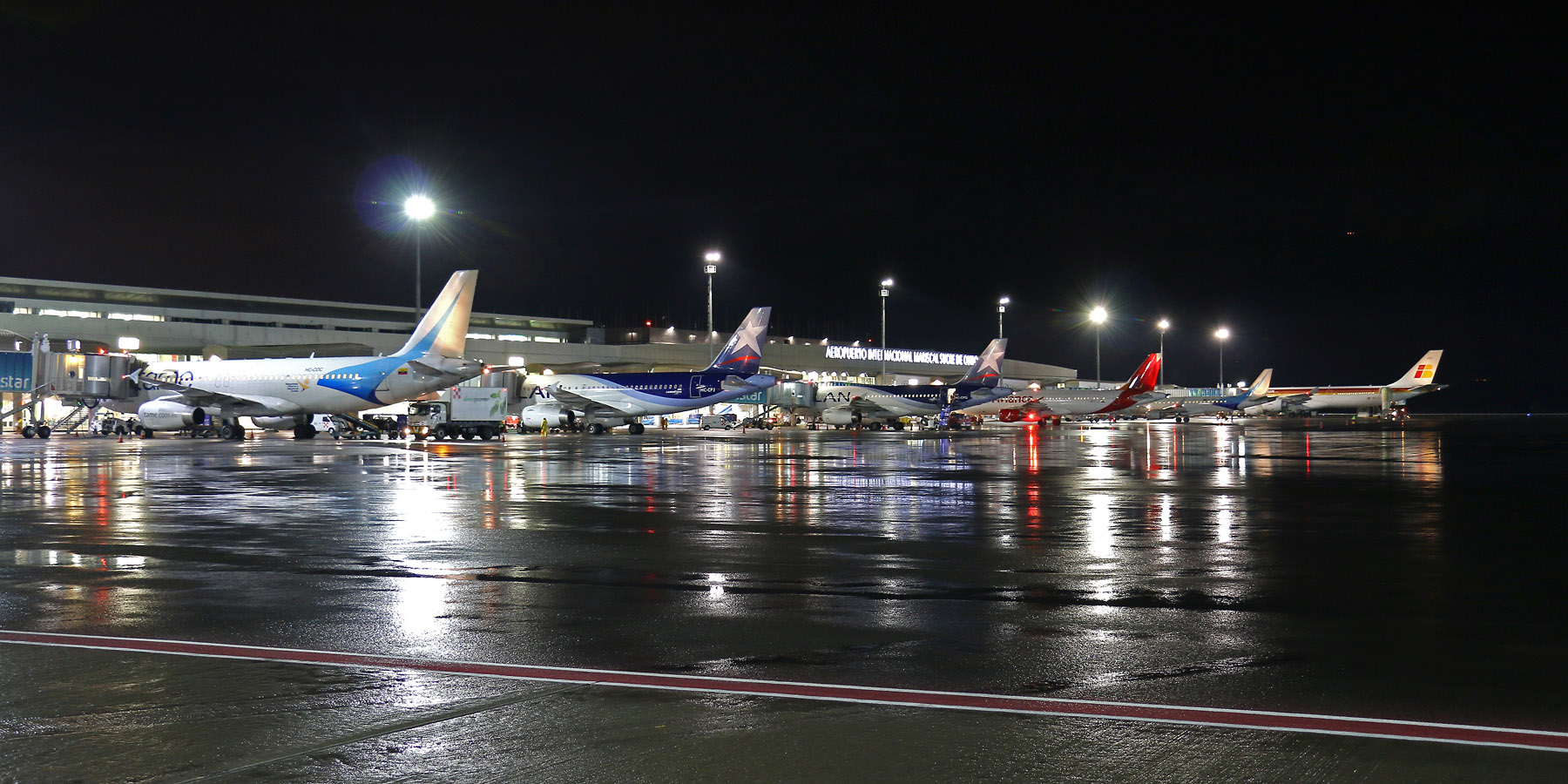QUITO INTERNATIONAL AIRPORT RECEIVES INTERNATIONAL CERTIFICATION FOR REDUCING THE EMISSION OF 583 TONS OF CARBON DIOXIDE

This positive impact on the environment grants the delivery of the Certificate for Phase 2 – Reduction under the Airport Carbon Accreditation Program, an initiative of Airport Council International that is recognized by the World Bank, the International Civil Aviation Organization (ICAO), and the Federal Aviation Administration (FAA).
Quito, October 2, 2017. During the last week of September, Airport Council International granted the Quito International Airport the Certificate for Phase 2 – Reduction under its Airport Carbon Accreditation Program (ACA)— a global initiative that seeks to reduce carbon emissions in the airport industry and significantly contribute to the efforts to mitigate climate change.
The Quito International Airport becomes the first airport of between 5 and 15 million passengers to be accredited for level 2 Reduction in the Latin-American and Caribbean region.
This is the continuation of a 4-step program consisting of mapping, reduction, optimization, and neutrality, geared towards environmental efficiency and reduction of carbon emissions. In 2015, the Council granted the Quito Airport a certification for its fulfillment of the mapping step, i.e. calculation of its environmental footprint.
This year (2017), after implementation of specific programs designed by Corporación Quiport, the concessionaire of the capital’s airport, the Reduction certificate endorses the efforts towards achieving a cleaner environment.
Andrew O’Brian, President and CEO of Quiport, explained that, since its opening in 2013, the Quito International Airport is committed to being an engine for development that will take into account the needs of society and the environment. Therefore, he accepted the carbon accreditation challenge.
“We have fulfilled levels 1 and 2 satisfactorily. Our intent is to proceed immediately to level 3, Optimization; in other words, build alliances with service provides in the airport and create a collaborative structure to reduce CO2. In the medium term, the goal is to achieve neutrality in our carbon footprint,” he said.
According to data from the Corporación Quiport Social Responsibility Program, Quito Airport’s carbon footprint went from 5,533 CO2 tons in 2014 to 4,950 CO2 tons in 2016. In other words, in two years, the airport has prevented 583 tons of carbon dioxide from being released into the environment.
The main actions to achieve this goal have to do with reductions in the use of energy. This airport terminal now has 7,700 LED lamps, out of which 90% have automatic regulation sensors. Furthermore, the landing and take-off runways are equipped with 180 lights with similar features.
Moreover, the Quito Airport has implemented a lighting schedule to take advantage of natural light and the AC water cooling equipment remains off between 10:30 p.m. and 8:00 a.m. Additionally, the airport has a dehydration plant for waste water, an incinerator for waste with technology that reduces gas emissions, an air quality policy that prioritizes the use of alternative fuel, and a 70-hectare plant and wildlife conservation area.
This new milestone places the Quito Airport at the forefront of airports with environmental awareness and allows it to continue to be a leader in the region.
